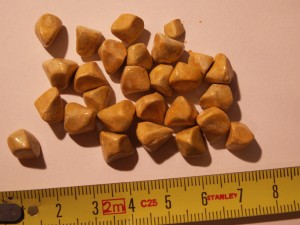A hernia is the protrusion of an organ or tissue through the structure or muscle that usually contains it. A hernia occurs immediately or over a long period of time when a combination of muscle strain and weakness is present in the body.
Hernias are most common in the abdomen, but they can also appear in the upper thigh, belly button, and groin areas. Most hernias are not immediately life threatening, but they don’t go away on their own and can require surgery to prevent potentially dangerous complications.
Factors that strain your body and may cause a hernia, especially if your muscles are weak, include:
- Being pregnant, (which puts pressure on your abdomen)
- Being constipated, which causes you to strain when having a bowel movement
- Heavy weight lifting
- Fluid in the abdomen, or ascites
- Suddenly gaining weight
- Straining with urination
- An Underlying malignancy
- Persistent coughing or sneezing
Common symptoms of a hernia include:
- Pain or discomfort in the affected area, especially when bending over, coughing, or lifting
- Feeling weakness, pressure or heaviness in the abdomen
- A bulge or protrusion which enlarges with straining and resolves when lying down
- Feeling a burning or aching sensation at the site of the bulge
If you suspect that these symptoms could be a hernia, visit your doctor for an examination of the affected area and be sure to detail all symptoms. If the results reveal a hernia then the next step would be surgical repair. Whether or not you need surgery depends on the size of your hernia and the severity of your symptoms. During hernia surgery, the weak tissue in the wall of the abdomen or groin is repaired with a mesh.
Technology in surgery is constantly evolving with the intent of increasing positive clinical outcomes and improving patient safety and recovery. One of the greatest medical advances to occur in the pursuit of these goals was the development of surgical robots. Flushing Hospital Medical Center in its dedication to providing patients with the most technologically advanced tools in health care, acquired the da Vinci Surgical Robot. This tool allows for a minimally invasive surgery offering many benefits including, less pain, faster healing time, shorter hospital stay and less risk of infection.
If you have been diagnosed with a hernia and are looking to have the procedure done using the da Vinci surgical robot, Flushing Hospital Medical Center offers this procedure.
For more information about robotic surgery or procedures performed by our surgeons, please contact Flushing Hospital’s Department of Surgery at 718-670-3135.
All content of this newsletter is intended for general information purposes only and is not intended or implied to be a substitute for professional medical advice, diagnosis or treatment. Please consult a medical professional before adopting any of the suggestions on this page. You must never disregard professional medical advice or delay seeking medical treatment based upon any content of this newsletter. PROMPTLY CONSULT YOUR PHYSICIAN OR CALL 911 IF YOU BELIEVE YOU HAVE A MEDICAL EMERGENCY.


